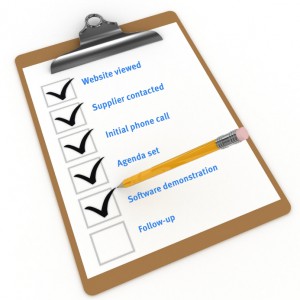What should you expect from a software demo?
Anonym
 As an Account Manager for Equisys’ Timemaster product, one of the tasks I am responsible for is providing interested businesses with an initial demonstration of the system. This stage of the consultation process is really important, as it is usually the first time a potential customer lays eyes on the software – the conclusions formed during this time can leave an indelible mark on their perceptions of how the software could fit their business moving forward. And actually, it’s important to remember here that the buying process is always a mutual endeavor and is most successful when everyone involved works together to ensure that all business requirements are fully understood.
As an Account Manager for Equisys’ Timemaster product, one of the tasks I am responsible for is providing interested businesses with an initial demonstration of the system. This stage of the consultation process is really important, as it is usually the first time a potential customer lays eyes on the software – the conclusions formed during this time can leave an indelible mark on their perceptions of how the software could fit their business moving forward. And actually, it’s important to remember here that the buying process is always a mutual endeavor and is most successful when everyone involved works together to ensure that all business requirements are fully understood.
In order for both parties to get the most out of this time – and for our clients in the architectural, consultancy and engineering industries, time is, quite literally, money – it’s important to have a clear structure in place. This structure should recognize that every business is unique and this should be reflected in the demonstration. For me, the best time to address this is in an initial phone consultation. I like to use these calls to encourage people to lay out the problems they would like to use the software to solve, and I can then treat this as a brief for the demo. Subsequent to this, I would follow up with an email – or as part of the meeting invite – to clarify these points in the form of an agenda; this leaves both parties knowing what to expect from the upcoming demonstration.
Before the demonstration begins, the agenda should be discussed and clarified, and any additional points added. After this formality is out of the way and the demo begins, I always believe it’s best to adopt an open and casual approach, with the potential customer free to ask questions as they go. It’s important to remember that no question is too obvious, or lacking in importance and a good Account Manager will actually relish the chance to talk through any doubts about the software this early in the process, so fire away.
After the demonstration has concluded, it’s always beneficial for both parties to recap and make sure all the points on the agenda were covered. There may be questions which require consultation with another member of the team, such as a Product Manager or Software Developer, so remember to agree on these and set some timescales for feedback. This is also a good time to discuss your process for making a decision and timescales, so that the Account Manager knows when is best to contact you, and you know when you should expect to hear back from them.
Now, with all that out of the way, time to rinse and repeat with the next prospective supplier!
P.S. If you’re convinced during or after the demonstration that the software isn’t the right fit for you and your business, feel free to say so. As sales people we love feedback, and don’t worry we’re pretty well acquainted with rejection too!